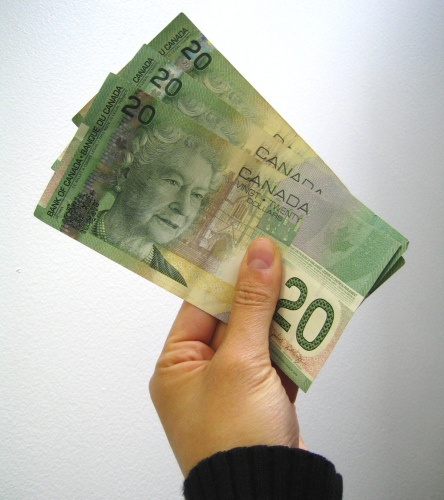
“We should have bought American dollars when the dollar was par,” my husband said to me recently, after watching yet another news anchor bemoaning the state of the plummeting Canadian dollar. With four stateside trips planned over the upcoming few months, we were feeling the pinch each time we went to buy American money for a trip.
Without a magical time machine to take us back to invest in a stronger dollar, we’re forced to adjust our spending habits when travelling to stay within our budget. Don’t let the weak dollar cramp your vacation plans! Here are a few tips on saving when the dollar is low:
Know the exchange rate
Many Canadian credit cards charge a premium on each U.S. transaction, so check with your credit card provider and bank before you travel to be sure you understand their rates on transactions and any additional transaction or ATM fees. The best way to get the lowest currency exchange rate is to use a credit card without a foreign transaction fee. Avoid currency exchange booths at the airport – they generally offer a rate significantly worse than a bank. If you’re fascinated by exchange rates, there’s a great article (do read the comments!) about the issue at GreedyRates.ca.
Pack with foresight
If you’ve ever thought to yourself, “I won’t pack that, I’ll just buy it there,” you might want to rethink that strategy. If you’re travelling somewhere warm and need warm weather clothing, thrift stores often have out of season clothing to be had much cheaper than the tourist trap shops in your destination.
Pack snacks… a lot of snacks!
While packaged food can sometimes be cheaper in the US, it’s dependent on how easily accessible a big box store is from your accommodation. If you’re not certain cheap groceries are easily accessible, consider packing food from home. An eight pack of granola bars for $1.77 beats $3 each for granola bars bought at the airport or convenience store.
Travelling with food isn’t as difficult as you might think. You can view the rules around bringing food across the border on the U.S. Customs and Border Agency website. Always identify what foods you’ve brought with you for your trip when asked at Customs, and ensure you have fruit or veggies in your carry on for easy inspection.
Change your itinerary
Planned to hit the outlet mall? Take in the state park instead. It’s easy to find things to do in a strange city that don’t involve high admission fees or opportunities to add to our every-growing pile of “stuff.” Check out parks, playgrounds, walk-friendly neighbourhoods, outdoor festivals and historical tours. Geocaching can also be a fun (and free!) way to explore a new place.
Simple math will save a lot
When you’re contemplating a purchase, especially non-necessity items like clothing or toys, multiply the price in your head to add 20-25%. Is that dress still a steal when the price was $50 instead of $40? Is the $4 (wait, $5) coffee a necessity when there’s free coffee in the room?
Stateside shopping isn’t always about getting a great deal – there are often products you just can’t get in Canada. These can be the hardest items to refrain from purchasing – who doesn’t want to try cake batter M&Ms? Do the math and really consider if the items are a need or simply a want, and if that want is enough to make you want to blow your budget.




